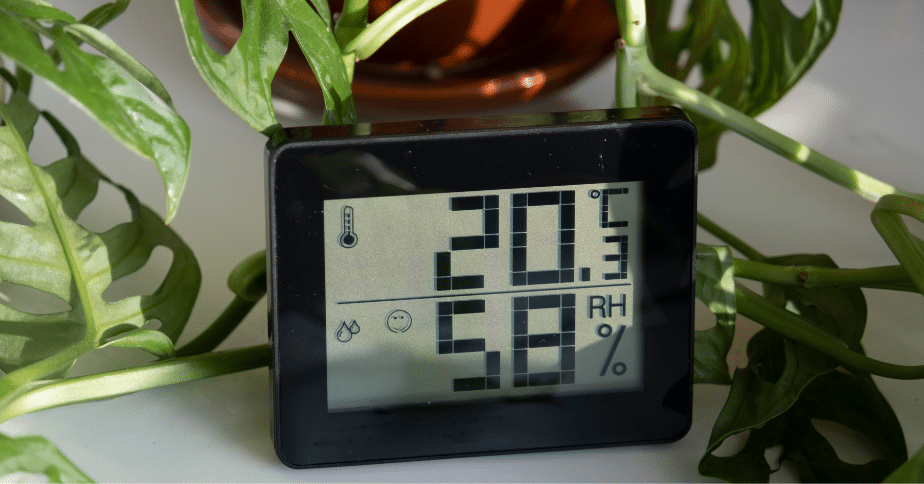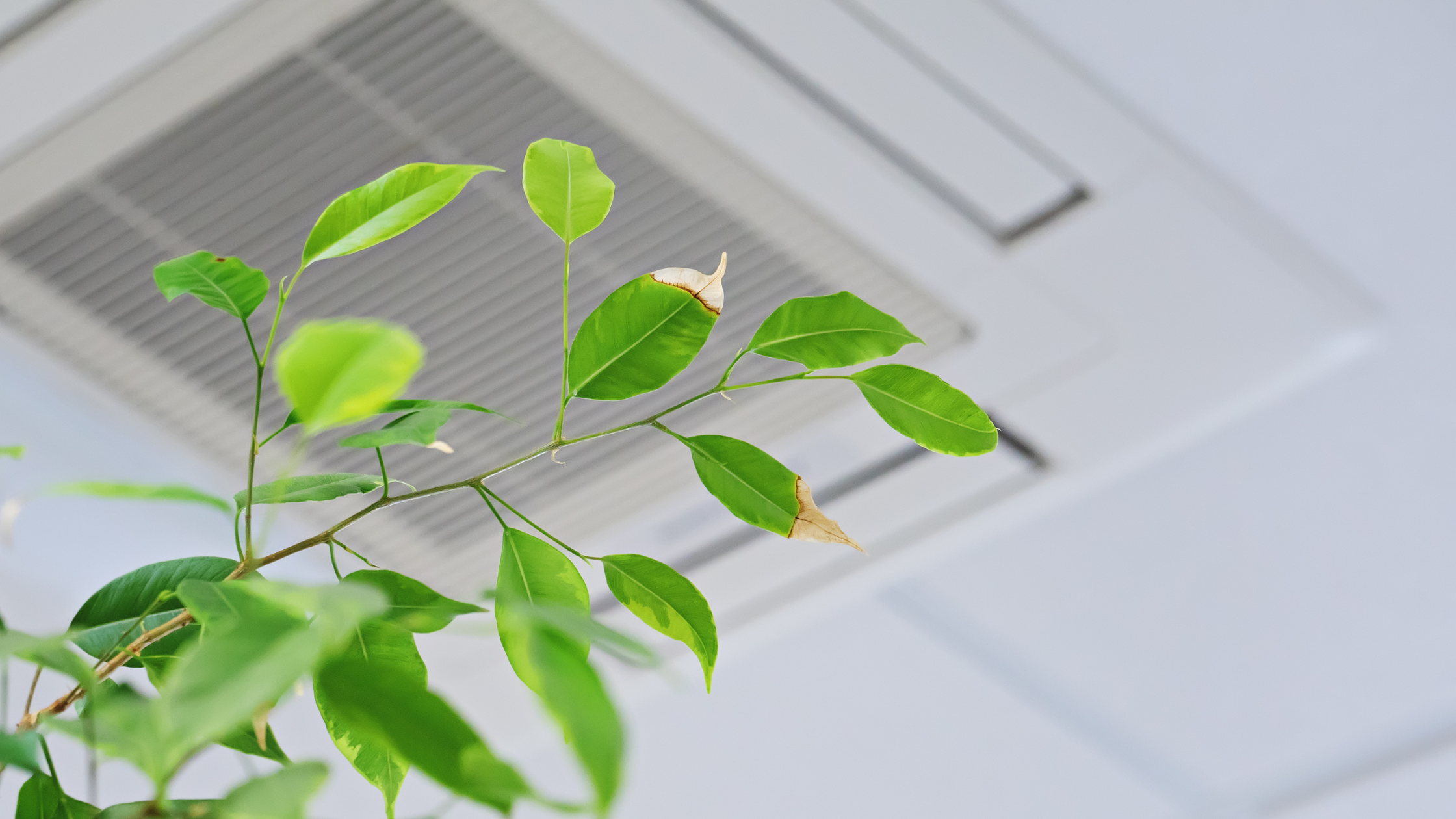Does Humidity Affect Indoor Air Quality?

Indoor air quality is vital for the health and comfort of your home. Mold, mildew, dust mites, bacteria – all the biological contaminants that can impact air quality thrive in humid conditions. So when our customers at Air Quality Assessors (AQA) ask if humidity affects indoor air quality, the answer is a resounding yes.
In this article, we’ll break down precisely how moisture and humidity impact the air quality in your home. We’ll also provide the optimal indoor humidity range to target, how to monitor and control humidity, and signs that humidity is degrading your indoor environment. Arm yourself with knowledge on how this one factor – humidity – can influence the quality of the air you and your family breathe every day.
The Direct Impact of Humidity on Biological Contaminants
To understand why humidity causes indoor air quality issues, you first need to understand what needs moisture to grow and multiply. Mold, mildew, bacteria, dust mites, and other biological contaminants all thrive in humid conditions. Here’s a deeper look:
Accelerating Mold and Mildew Growth
Mold and mildew spores exist nearly everywhere, both indoor and outdoor. But they require moisture to actually propagate and spread by releasing mycotoxins, cell fragments, proteins, and volatile organic compounds (VOCs) into the air. Damp conditions provide the feeding ground for existing spores to explode into full-blown infestations inside wall cavities, under flooring, and behind furniture. Even small leaks or seasonal condensation can spark mold growth.
According to the EPA, keeping indoor humidity under 50% can slow mold growth by up to 90% compared to 70% humidity or higher.
Bacteria Also Thrive on Moisture
Like mold, bacteria rely on moisture to thrive. Numerous species of dangerous gram-positive and gram-negative bacteria have higher survival rates in humid conditions. Bacteria can accumulate in flooded areas after major leaks, or slowly spread through condensation and dampness issues over time.
Humidity allows colonies to grow which releases endotoxins. These neurotoxic and pro-inflammatory agents then become aerosolized or airflow-driven through your home, leading to potential illnesses through contact or inhalation.
Fueling the Spread of Microscopic Dust Mites
You can’t see them, but dust mites exist nearly everywhere indoors. These microscopic critters float on dust particles and thrive in humid conditions like bedding, carpeting, soft furniture, and fabric items. Higher humidity allows for faster reproduction and growth of mite populations.
As the mites feed on dead human skin cells and multiply, they also defecate. The particles from their carcasses, waste, and eggs then circulate through the air as people move, vacuum, or otherwise disturb materials housing dust mites. The debris triggers allergic reactions and aggravates conditions like eczema for those sensitive.
How Humidity Impedes Proper Ventilation
Beyond enabling biological growth directly, excess humidity also reduces the ability for HVAC systems to properly ventilate indoor air. Damp air interferes with heating and cooling functions, which leads to:
- Reduced airflow & air changes per hour
- Decreased filtration as moisture accumulates on air filters
- Condensation buildup on AC evaporator coils, restricting performance
- Reversed air pressure relationships that redistribute contaminants
With suboptimal HVAC performance, pollutants aren’t effectively removed. New contaminants continue to enter, all while existing ones circulate and accumulate.
Finding the Proper Humidity Balance
Understanding the direct biological impact of humidity likely has you questioning – what humidity levels should I try to maintain? Finding the optimal balance minimizes comfort and indoor air quality issues:
Recommended Thresholds
Most experts recommend keeping indoor relative humidity levels:
- Between 30-50% – This helps minimize biological growth while maintaining comfort
- Below 30% – Can dry out eyes, skin, throat, and cause irritation
- Above 50% – Mold, bacteria, and dust mites start to rapidly multiply and spread
Pay attention if humidity exceeds 60% for over 48 hours. This signals elevated contamination risk requiring moisture reduction.
Regional & Seasonal Adjustments
Ideal humidity levels do require slight seasonal adjustments based on outdoor climate:
- Humid/Rainy Seasons: Strictly minimize indoor levels above 50%
- Dry Seasons: Can allow humidity slightly above 50% temporarily to avoid overly dry air
Cooler climates also tolerate slightly higher moisture levels given the lower heat. The optimal indoor humidity, however, rarely exceeds 55%.
Monitoring and Controlling Humidity
To reap the indoor air quality benefits of managed humidity, reliable monitoring, and humidity control are essential.
Measuring Current Humidity Levels
Humidity itself is invisible, so specialized instruments measure moisture levels. The most common option is a hygrometer, which measures relative humidity. You can buy simple digital hygrometers from several online marketplaces. Use these monitors in problem rooms like basements first, then expand placement for whole-home coverage.
Active Humidity Control
If humidity rises excessively in your home, take active countermeasures:
- Run ACs to dehumidify while cooling
- Use stand-alone dehumidifiers with humidistats
- Increase ventilation to remove moisture
- Fix leaks or insulation gaps enabling moisture intrusion
Ideally, engage a trained professional to identify and resolve the root moisture sources rather than only treating the symptoms. An ounce of prevention through building envelope repairs or HVAC upgrades goes a long way!
Upgrade Filtration to Handle Humidity
Enhanced air filtration helps compensate for indoor air quality issues caused by humidity or subpar HVAC function. Homeowners can use better HVAC filters and other air filtering/purification options to lower humidity. Contact AQA for more information and recommendations.
Signs Humidity is Impacting Your Indoor Environment
Even with monitors, how do you spot signs of humidity issues degrading indoor air quality before testing reveals a problem? Look for:
- Visible mold or mildew growth
- Peeling paint or warped floor materials
- Musty, earthy, or foul smells
- Lingering dampness or condensation
- Dust buildup around vents or on surfaces
- Family members with allergy or asthma flares
Don’t ignore those indicators of potential humidity and air quality issues! Early intervention prevents exacerbated problems down the road.
Professional Testing Provides Definitive Answers
Wondering if humidity truly is impacting the air quality in your home? Contact the indoor air quality experts at AQA to schedule testing! We offer:
- Humidity measurements
- Mold spore sampling
- Allergen screenings
- Ventilation assessments
- Leak inspections
- Full home air quality audits
Our testing provides objective data on indoor humidity alongside actionable details on your home’s unique air quality issues. We’ll customize practical remediation guidance to address any problems discovered.Breathe easier by acting early with AQA’s support to control harmful humidity and improve your indoor air! Reach out today to start the process.
Air Quality FAQs
For further indoor air quality questions related to humidity, explore some of our most common inquiries:
Does air conditioning help control humidity?
Yes! AC units remove moisture from the air as they cool it. Just be sure to keep the coils clean for proper moisture removal.
How can I tell if high humidity is impacting my indoor air quality?
Signs include mold/mildew growth, musty odors, condensation on windows and walls, warped floorboards, and dust buildup. An air quality test can check for elevated mold, bacteria, or particulates.
Should I get a dehumidifier?
In chronically humid climates or during rainy/damp seasons, a dehumidifier helps manage moisture levels. We recommend models with built-in humidistats to automatically turn on when humidity is too high.



